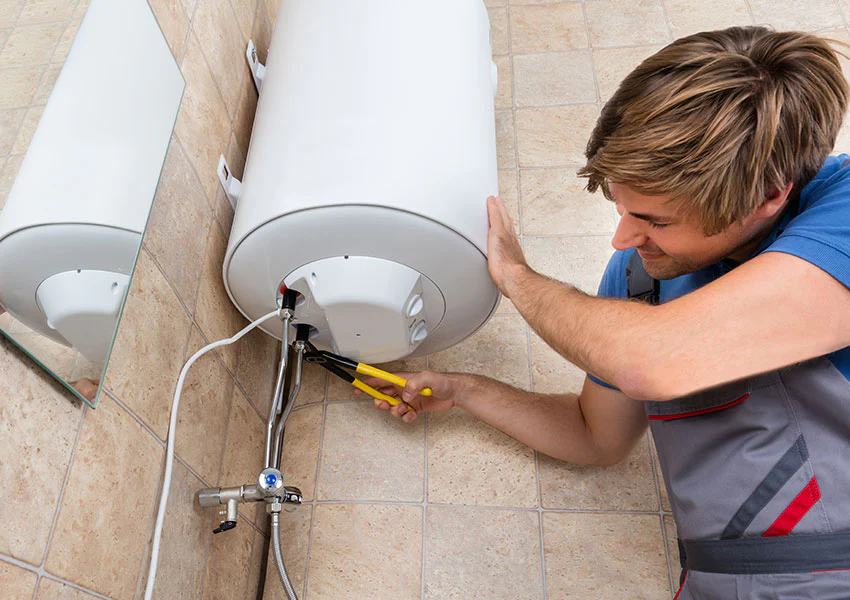Steps on How to Maintain Your Home's Hot Water System ProperlyImportant Care Techniques for Your Home's Hot Water System
Steps on How to Maintain Your Home's Hot Water System ProperlyImportant Care Techniques for Your Home's Hot Water System
Blog Article
Any individual will have their own unique thoughts in relation to How to Maintain a Hot Water Heater in a Few Simple Steps.

Hot water is necessary for daily comfort, whether it's for a revitalizing shower or washing recipes. To ensure your warm water system runs successfully and lasts longer, routine upkeep is key. This write-up provides functional pointers and insights on exactly how to preserve your home's warm water system to stay clear of disruptions and expensive repair services.
Intro
Preserving your home's warm water system might seem complicated, yet with a couple of straightforward steps, you can ensure it operates smoothly for years to come. This guide covers everything from understanding your hot water system to DIY upkeep tips and recognizing when to call professional help.
Relevance of Preserving Your Warm Water System
Routine upkeep not only extends the life expectancy of your hot water system yet additionally guarantees it runs effectively. Overlooking maintenance can lead to decreased efficiency, higher energy bills, and even premature failure of the system.
Indications Your Hot Water System Requirements Maintenance
Understanding when your hot water system needs interest can avoid major problems. Watch out for indications such as inconsistent water temperature, strange noises from the heater, or rusty water.
Flushing the Hot Water Heater
Purging your hot water heater removes debris build-up, boosting performance and lengthening its life.
Monitoring and Changing Anode Rods
Anode poles stop rust inside the tank. Examining and replacing them when broken is critical.
Facility Concerns Needing Expert Help
Examples consist of major leaks, electrical troubles, or if your hot water heater is constantly underperforming.
Regular Expert Maintenance Benefits
Professional maintenance can include thorough inspections, tune-ups, and guaranteeing conformity with security requirements.
Evaluating and Adjusting Temperature Settings
Changing the temperature setups makes sure optimum efficiency and safety and security.
Do It Yourself Tips for Maintenance
You can carry out a number of maintenance tasks yourself to keep your hot water system in top condition.
Checking for Leaks
Routinely check pipelines and connections for leaks, as these can result in water damages and higher expenses.
Recognizing Your Hot Water System
Before diving right into maintenance tasks, it's helpful to recognize the fundamental components of your warm water system. Usually, this includes the hot water heater itself, pipelines, anode rods, and temperature controls.
Month-to-month Maintenance Tasks
Normal monthly checks can aid capture minor issues before they escalate.
Examining Stress Relief Valves
Examining the stress relief valve guarantees it works properly and prevents extreme pressure accumulation.
Insulating Pipelines
Protecting hot water pipelines decreases warmth loss and can save power.
When to Call an Expert
While do it yourself upkeep is advantageous, some concerns need professional experience.
Final thought
Regular upkeep of your home's warm water system is important for performance, durability, and price savings. By adhering to these ideas and knowing when to seek specialist help, you can make sure a reliable supply of hot water without unanticipated interruptions.
How to Maintain an Instant Hot Water Heater
Before tinkering with your hot water heater, make sure that it’s not powered on. You also have to turn off the main circuit breaker and shut off the main gas line to prevent accidents. Also turn off the water valves connected to your unit to prevent water from flowing into and out of the appliance. 2. When you’re done, you have to detach the purge valves’ caps. These look like the letter “T” and are situated on either side of the water valves. Doing so will release any pressure that has accumulated inside the valves while at the same time avoid hot water from shooting out and burning your skin. 3. When the purge valves’ caps are removed, you have to connect your hosing lines to the valves. Your unit should have come with three hoses but if it didn’t, you can purchase these things from any hardware or home repair shops. You can also get them from retail stores that sell water heating systems. Read the user’s manual and follow it to complete this task properly. When the hosing lines are connected, open the purge port’s valves. 4. You should never use harsh chemical cleaners or solutions when cleaning your unit. Make use of white vinegar instead. It should be undiluted and you’ll probably use about 2 gallons. 5. Now flush your water heater. This task should probably take about 40 minutes. We can’t give you specific directions for this because the procedure is carried out depending on the type, model and brand of your heater. With that being said, refer to the user’s manual. 6. When you’re done draining the unit, you have to turn off the purge port valves again. Remove the hosing lines that you earlier installed on each of the water valves. Put the valve caps (purge port) back in their respective places and be very careful so as not to damage the rubber discs that are found inside these caps. 7. Now that everything’s back in place, check your user’s manual again to find out how to reactivate your water heating system. 8. Once it is working, turn one of your hot water faucets on just to let air pass through the heater’s water supply pipes. Leave the tap on until water flows smoothly out of it. https://www.orrplumbing.com/blog/2014/september/how-to-maintain-an-instant-hot-water-heater/

I'm just very excited about How to Maintain a Hot Water Heater in a Few Simple Steps and I'm hoping you enjoyed our page. Are you aware of another individual who is interested in the niche? Take a moment to promote it. I praise you for being here. Don't forget to visit our website back soon.
Order Repair Report this page